Cervical osteochondrosis (COX) is diagnosed more often in women than in men. However, their symptoms are almost the same. However, it should be remembered that the course of the disease in each patient occurs individually, regardless of gender.
Men react less attentively to any crisis in the neck, the symptoms of SHX are hidden. This is due to the anatomy of people of different sexes. Male muscles develop, so extra protection is created for the discs. They form a kind of shell that supports the vertebrae, which prevents their deformation.
The female spine adapts better to various stresses (related to childbirth and childbirth), but MCD symptoms appear more often and more vividly.
How are spinal and male health related?
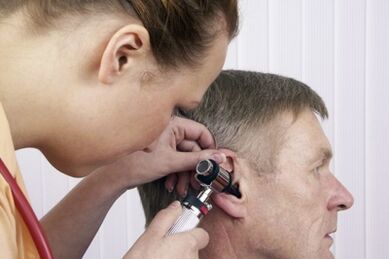
With the defeat of SHX, the brain receives less nutrients, and blood vessels become blocked. Men often complain of migraines and dizziness.Men are starting to worry:
- Hypertension.
- The rhythm of coordination is disturbed, instability occurs during walking.
- Decreased visual activity and sharpness.
- Hearing deteriorates, often ringing in the ears.
- The sound is hoarse and rough, as if after an illness.
- Women are increasingly complaining about their husbands snoring.
Symptoms
Various pains
Unpleasant sensations begin with strong movements of the cervical region. They can often be accompanied by forced exhalation and sneezing. If the affected area is stretched during wind or immersion in an ice pit, the unpleasant sensations are exacerbated. It is difficult for a man to turn his head, and even a slight bend is disturbing.
At the same time, if the middle finger or toes become numb or crunchy, most WOH occurs in parallel with the disease of the roots of the spinal nerves.
Weakness of the upper extremities
Older men often complain of weakness and numbness of the bone tissue. It often manifests itself in the arms or legs, especially at night or during sudden changes in weather.
If nothing is done, muscle weakness will cause them to numb and atrophy. This is due to diseases of the spinal cord. The latter are directly related to the development of diseases of the roots of the spinal nerves.
Desensitization
Tissue sensitivity decreases as a result of blockage or inflammation of blood vessels. Sensitivity is impaired, this ossification is manifested by vibration, the skin in the affected area becomes pale, acquires a red color during massage. Deterioration of blood flow is often accompanied by problems with blood vessels.
Cracking in the neck and limited mobility
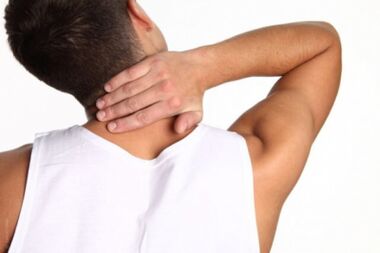
Crispy movements in the cervical region do not always indicate dangerous diseases that indicate pathological processes. This may be due to genetic predisposition. It is often seen as a result of increased load on the cervical region. Another reason is muscle spasm or maximum relaxation of muscles that do not have time to respond to contractions.
Crispy movements appear to be in response to excessive joint mobility. They can be stimulated with frequent and intense physical exercises to strengthen the back muscles.
Crispy movements in the cervical region are often accompanied by rapid turns of the head, which indicates the development of such pathologies:
- Dystrophic disorders of articular cartilage.
- Thorny growth of bone tissue along the edges of the body.
- Salt deposits.
- Bone displacement in the joint as a result of trauma.
- Dislocation of the pulpous nucleus of the intervertebral disc, with rupture of the annulus fibrosus.
- Spondylolisthesis.
- Cartilage deformation.
The spine loses its shock-absorbing properties, the intensity and strength of friction doubles, and a crunch appears. Therefore, the spine is physiologically lowered, which leads to limited motor activity during the inclination or movement of the pelvis in a circle.
Loss of coordination and dizziness
The problem develops with a lack of blood supply to the complex receptor of the vestibular analyzer.
The patient suddenly calls for forced exhalation or vomiting. During the movements, the person feels bored, his legs become loose, and the person loses direction in space.
Blurred vision and hearing, slurred speech
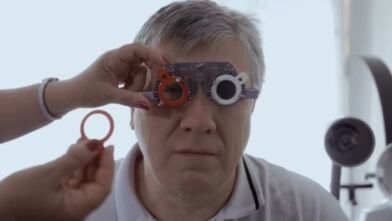
A person's eyes have white spots that look like small flies. Over time, the image becomes clear, then cloudy, such flashes can occur after a few minutes and continue continuously. After a while, they can stand on their own. Sometimes a person begins to lose direction in time and space.
Hearing loss is also diagnosed.Gradually, the person begins to ring in his ears, hears sounds. Often the sound is in one ear, less often in both at the same time. Sometimes men are bothered by the feeling of congestion in the ears, which is sometimes itchy.
Sore throat
Experts call this symptom pharyngeal cervical osteochondrosis. A man has a mucous plug in the throat, it is difficult to speak, breathe, begins to cough allergic. The fungus causes sweating, which is expressed by a sore throat. Often due to a dry, unproductive cough, the mucous membrane dries, there is a burning sensation, itching. After that, the classic sore throat begins, the voice is muffled. If you do not identify the root cause of such a reaction, the situation will only get worse over the years.
Tingling in the heart, feeling of pressure in the chest
In some casesSOH causes tingling in the shoulder joint or elbow. In this case, compression movements in the thoracic region are diagnosed. The heart muscle or liver often vibrates because blood flow is disrupted and the organs do not receive the necessary amount of nutrients distributed by the blood.
Over time, due to SHOH, the heart begins to pound and squeeze strongly, the heart rate accelerates.
Redness of the skin
Due to SOC, neurological problems begin in the region of the brain that regulates its neuroendocrine activity and homeostasis in the body. It provokes chronic fatigue syndrome, a man always wants to sleep, his mood changes often, his skin turns red.
Besides,neurology causes depression, a person is followed by panic attacksand unfounded fears. The skin becomes red, then sharply pale, the pressure rises, the heart beats faster.
At the same time, sexual activity in men decreases, urination becomes difficult, and food apathy develops.
Other symptoms
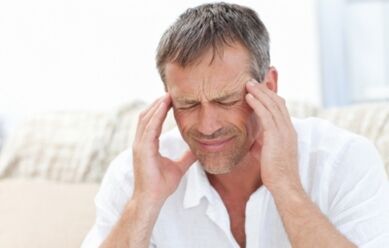
- Sudden vasospasms. Man accidentally loses his orientation in space and "falls off his feet. "At this time, it should be placed on a hard surface and wait a while until the blood supply to the brain improves. The man will recover in a few minutes, but after that he will feel tired and have a headache.
- Pain can affect the arms, shoulders, as well as the cervical region. It is often seen in the occipital lobe, squeezing a person's head like a hoop.
- Increased upper chest tone. At night, the muscle corset is in good condition, which affects the tension.
- Compressed nerve roots. Symptoms may vary. It depends on the course of the disease, its stage and the affected spine itself. For example, the fingers may become numb or all the limbs may be paralyzed.
- Neuralgia of the nerve roots in the back of the head. This symptomatology is characteristic of members of the stronger sex, where inflammatory processes occur during the disease or irritation of the cervical nerves. As a rule, it appears during freezing or increased pain in the occipital region.
The attack occurs suddenly in men, resembling an electric shock. Such an adverse reaction lasts only a few minutes, then the pain begins to subside. Neuralgia manifests itself up to 5 times a day. At the same time, the occipital lobe loses sensitivity, goosebumps appear.
Diagnostic methods
Before starting therapy, the patient should undergo an examination to identify the affected areas.
Diagnostic techniques:
- MRI or CT.
- x-ray.
- Rheumatic tests.
Which doctor should I see?

If a man feels a number of symptoms that provoke SOH, it is better to contact a specialist immediately. Which to contact:
- Therapist. They conduct preliminary examinations and give advice. If SOS symptoms are detected, the patient is referred to a specialist in a narrow field of work.
- Neurologist / Neurologist. WOH is a type of neurological disease, so men should consult a neurologist (neuropathologist).
- Specialist in vertebroneurology. This specialist selects the method of therapy and diagnoses the condition of the spine.
- Physiotherapist. Eliminates diseases using non-traditional treatments, including acupuncture. It improves blood flow and eliminates muscle spasms.
When to contact a specialist?
- With the main symptoms of changes in visual and auditory activity.
- Pain that can not be eliminated by pharmacological means.
- Vascular spasms leading to loss of consciousness.
Development and course of the disease
- The first degree of SHOH: small pathologies in the field of fibrous cartilage formation in the nuclear pulp. Excessive load causes dehydration of the core, which negatively affects the size of the disk and the formation of cracks.
- The second stage of SHOH: the height of the discs decreases rapidly, the spine begins to sway. This causes increased mobility of the vertebrae.
- Stage three: prolapse and protrusions of the intervertebral discs, which may be accompanied by the development of chronic spasm of the intervertebral joints.
Treatment
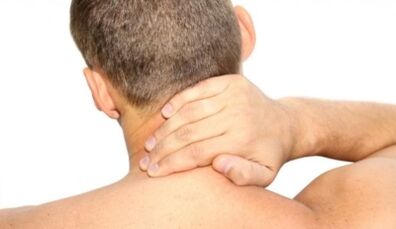
Treatment is a complex therapy, depending on the stage of the disease, from 30 to 90 days of intensive care and 12 months of supportive measures for the consolidation of results, as well as the prevention of relapses.
Conservative treatment of the disease - taking pharmacological drugs, conducting complex gymnastics.Surgery will be justified only in the absence of positive dynamics,development of the disease.
Folk remedies
Celery root is crushed and taken in proportion: 4 gr. The root is poured a liter of boiling water. One day it is brewed and filtered. Take 10 grams three times a day.
In folk therapy, the use of a self-massage or needle applicator will be excellent.


















